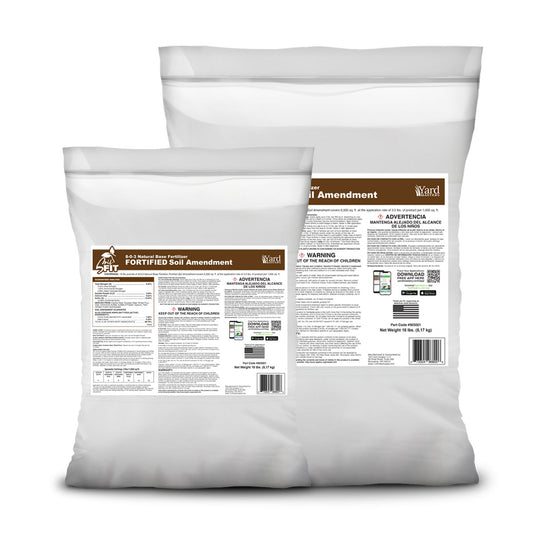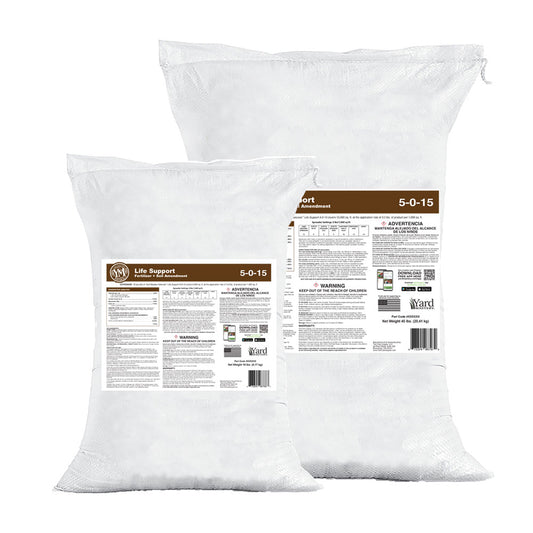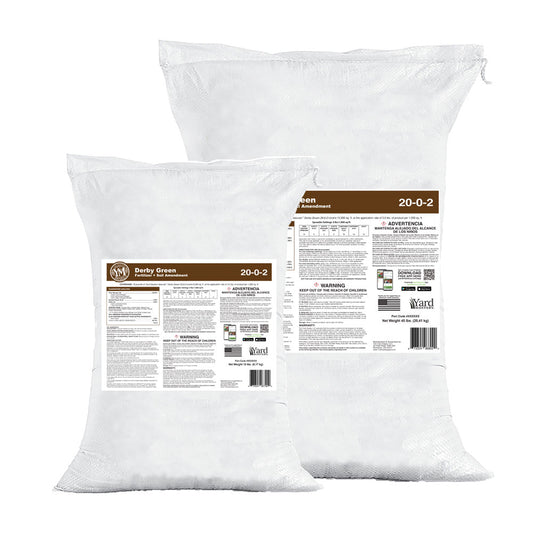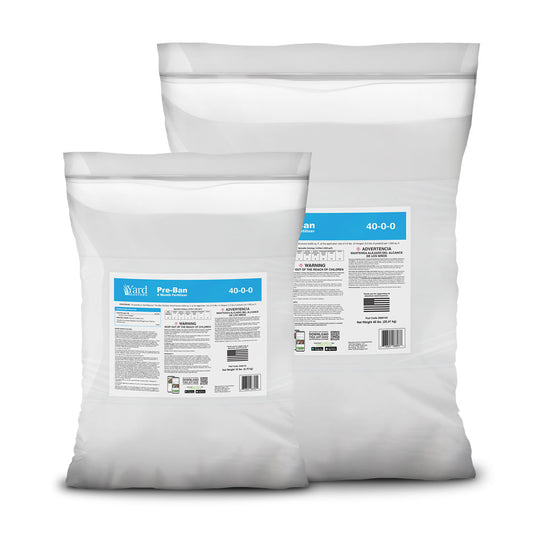Why Soil pH Matters
Adjusting your soil pH is one of the most powerful yet overlooked ways to improve your lawn's health. Whether your soil is too acidic or too alkaline, dialing it into the right range will help nutrients become available and allow your grass to thrive.
What is Soil pH and How Is It Measured?
Before diving into adjusting your soil's pH, let's talk basics: what exactly is soil pH, and how do we measure it?
Soil pH is simply a way of describing how acidic or alkaline your soil is. Think of it as a kind of “mood ring” for your dirt, ranging on a scale from 0 to 14. A pH of 7 is considered neutral, right in the middle. Numbers below 7 mean your soil is more acidic (think: pine forests or those places where moss loves to take over), while numbers above 7 signify alkaline conditions (where hard water and calcium residues tend to hang out).
Here’s a fun fact to keep in mind: the pH scale isn’t straightforward like a ruler. It’s logarithmic, which is a fancy way of saying that each whole number changes things by a factor of 10. So, soil with a pH of 5 is ten times more acidic than soil with a pH of 6. That means small adjustments can have big effects!
To measure your soil’s pH, most folks use a soil test kit—the kind you can grab from Yard Mastery. Some kits use test strips, others use probes, but the idea is the same: you’re getting a snapshot of where your soil stands, so you know exactly what you’re dealing with.
Why Start With a Soil Test?
Before you grab any product off the shelf, it’s crucial to know exactly where you stand. A soil test not only reveals your current pH, but also helps you avoid adding too much or too little amendment. If you haven’t done so already, collect a soil sample from your yard—most reliable soil testing kits will include clear directions. Once you have your results, you’ll know your starting point and can make informed decisions about how much lime (to raise pH) or sulfur (to lower pH) you need.
So, before you get your hands dirty with products, a quick soil test is your first, easy step to taking the guesswork out of adjusting your lawn’s pH. Just getting “lime” or “elemental sulfur” isn’t always easy, until now.
When looking to raise your soil pH (make it less acidic), you’ll need these from your soil test results:
-
Buffer pH: This is a special number on your report, specifically meant for figuring out lime requirements (not the regular soil pH).
-
Your Target pH: Decide on what you want your soil pH to be—typically somewhere in that magic 6 to 7.3 range.
Planning to lower your soil pH (make it less alkaline)? Here’s what you should have handy:
-
Current pH: That’s the soil pH right from your test report.
-
Target pH: Again, what’s your end goal?
-
Soil Type: (like sandy, loamy, or clay) because it tells you how much amendment you’ll need to get the job done.
Having these numbers ready will help you use any lime or sulfur product correctly, whether you’re using bagged blends from big brands or following custom recommendations. With your test data in hand, you’re on the way to getting your soil into that perfect pH sweet spot.
The Yard Mastery Soil Test Kit provides all this data, helping you make precise adjustments rather than guessing. It’s the easiest way to take control of your soil health.
How Soil pH Varies by Location and Over Time
Soil pH isn't set in stone—it varies naturally depending on where you live and what’s been happening in your yard. For example, in many areas (like here in the Midwest), your average soil pH can run anywhere from about 5.5 up to 7.5, but it’s not uncommon to see spots much lower or higher on the scale. Generally, most grass, flowers, and veggies like a pH range around 6.0 to 7.0, but some plants (think blueberries and azaleas) thrive in more acidic soils, while flowers like lilac or peony are happier in a bit more alkaline ground.
And here's something a lot of folks don't realize—soil pH doesn’t just stay put after you test it. It fluctuates over time. Factors like how often you apply fertilizer, what type of irrigation water you use, even the natural breakdown of organic material, and the ongoing weather can all nudge your soil pH up or down. For example, if you’ve ever noticed hydrangea flowers switching color from blue to pink or vice versa, it’s because those plants are little pH mood rings, reflecting the shifts happening right down in your soil.
So, with pH levels moving around due to both natural changes and our lawn care routines, it’s important to test your soil regularly, so you can catch issues before they start affecting your plants.
Ideal pH Ranges for Different Grass Types
-
Cool-season grasses (fescue, bluegrass, rye): 6.0–7.0
-
Warm-season grasses (bermuda, zoysia, St. Augustine): 6.0–7.3
How to Raise Soil pH (Make Less Acidic)
Use lime-based products like:
Mag-I-Cal PLUS Soil Food (Black Bag)
18 lb bag covers 5,000 sq ft. Safe for your lawn. Apply 2–4 times per year as needed.
How to Lower Soil pH (Make Less Alkaline)
Use sulfur-based products like:
Mag-I-Cal PLUS Soil Food (Purple Bag)
18 lb bag covers 5,000 sq ft. Up to 4x/year in extreme cases. Safe for your lawn.
Can Certain Fertilizers Change Your Soil pH?
If you’re wondering whether fertilizers like diammonium phosphate, monoammonium phosphate, or good ol’ urea can alter your soil’s pH, you’re not alone—this is a common question among lawn care enthusiasts.
Here’s the scoop: While these fertilizers are mainly used to provide nutrients, especially nitrogen and phosphorus, they also have a side effect—they can slowly acidify your soil over time. In other words, regular use of these products might gently nudge your pH downward, which is something to keep in mind if your soil tends to be naturally alkaline (high pH).
A few things to note:
- These fertilizers weren’t designed specifically to decrease pH, so don’t expect rapid, dramatic changes.
- They’re sometimes used by commercial growers to help balance alkaline soils, but for the average homeowner, consider them a slow-and-steady influence rather than a quick fix.
- For significant pH adjustments, you’ll want specialized products (like sulfur for lowering pH or lime for increasing it) rather than relying solely on your everyday fertilizers.
In summary: Fertilizers such as diammonium phosphate, monoammonium phosphate, and urea can gradually lower soil pH, but they work best as part of a long-term routine—not as your main solution for quickly adjusting pH levels.
How Long Does It Take to See Results?
Soil amendments take time to work. Lime may take weeks to months; sulfur acts more slowly. Regular testing and seasonal adjustments help.
Tips for Maintaining the Right pH
- Test soil 1–2 times/year
- Avoid excessive fertilizer
- Observe plant responses (e.g., hydrangea color)
- Reapply amendments in spring and fall
Common Mistakes to Avoid
- Skipping the soil test
- Overapplying lime or sulfur
- Expecting overnight results
- Ignoring soil type
FAQ
Q: How do I know how much lime or sulfur to apply?
A: Your soil test will guide you. Use buffer pH to raise pH and current pH + soil type to lower pH.
Q: Can I use both lime and fertilizer at the same time?
A: Yes, but always check product labels for best practices.
Q: Will this harm my lawn?
A: No. Yard Mastery’s Mag-I-Cal products are non-burning and safe.
Conclusion
Adjusting your soil pH is one of the most effective ways to level-up your lawn care game. With a quick soil test, the right products, and a little patience, you can create the perfect environment for a lush, green lawn.
Start with the Yard Mastery Soil Test Kit and take control of your soil health today.






